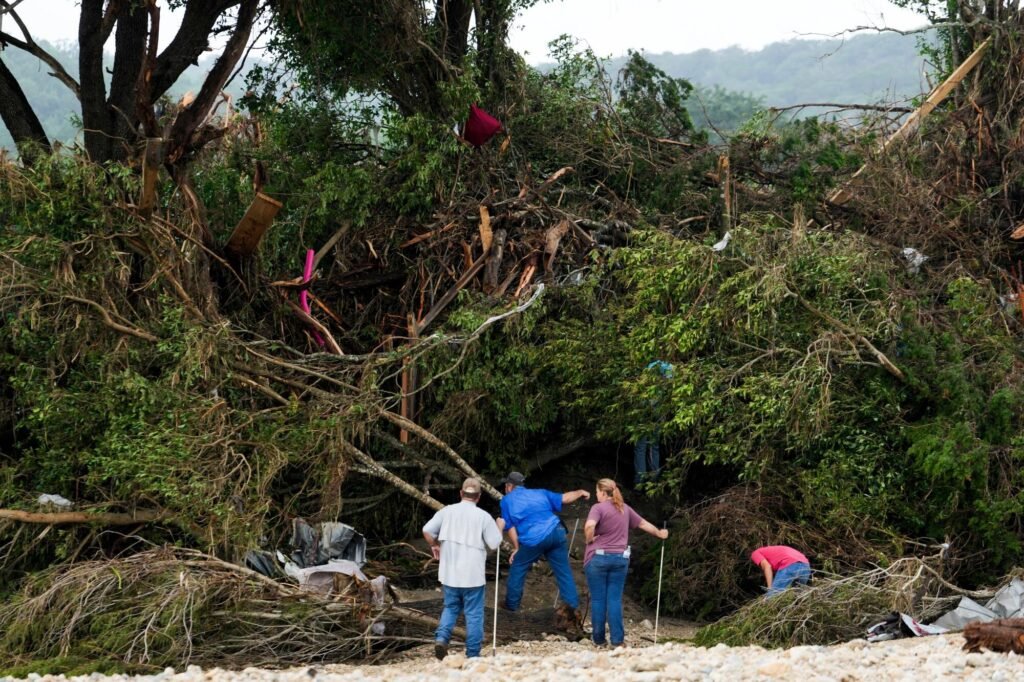A new poll has revealed something alarming: extreme weather fears are rising fast among Americans. From devastating floods to record-breaking heatwaves and powerful hurricanes, the weather is no longer something people just check in the morning — it’s something many are starting to fear.
Across the country, extreme weather events are happening more often and with greater intensity. People are not just noticing the change; they’re living it. Homes are being flooded, power lines are collapsing in storms, and heatwaves are turning cities into ovens.
Let’s take a closer look at what this new poll shows, why Americans are so worried, and what might be coming next.
Americans Are Worried: What the Poll Tells Us
A recent nationwide poll conducted by a leading research firm found that over 70% of Americans are concerned about extreme weather. The poll included responses from a wide range of age groups, locations, and political backgrounds.
Here are some key findings:
- 58% said they had personally experienced extreme weather in the past year.
- 72% said they believe extreme weather will get worse in the next 10 years.
- 65% think the government is not doing enough to prepare.
- 80% agree that climate change is playing a major role in worsening weather events.
These results show a strong shift in public opinion. People are no longer just reading headlines about disasters in distant places — they’re feeling the effects in their own backyards.
What’s Causing These Extreme Weather Events?
Extreme weather can include things like:
- Floods
- Hurricanes
- Tornadoes
- Wildfires
- Droughts
- Heatwaves
- Snowstorms
While all of these have occurred throughout history, scientists say they are now happening more often and becoming more intense because of climate change.
How Climate Change Plays a Role
Here’s how global warming contributes to more extreme weather:
- Hotter temperatures: More heat means stronger and longer heatwaves.
- Warming oceans: Warmer water fuels hurricanes, making them bigger and more destructive.
- Melting ice: Changes in the Arctic affect jet streams, leading to unusual storms and cold snaps.
- More moisture: Warmer air holds more moisture, leading to heavier rainfall and floods.
According to the National Oceanic and Atmospheric Administration (NOAA), 2023 had 28 separate billion-dollar weather disasters — the highest number ever recorded in one year in the U.S.
Real-Life Impacts: Stories from Around the Country

Let’s explore how these weather events are affecting everyday Americans.
Flooding in Vermont
In the summer of 2023, torrential rains caused historic flooding in Vermont. Rivers overflowed, homes were washed away, and entire communities were cut off.
Local resident Sarah Thompson said, “We’ve lived here for 30 years and have never seen anything like this. The water just kept rising. It was terrifying.”
Hurricane Ian in Florida
In late 2022, Hurricane Ian slammed into Florida as a Category 4 storm. The damage was catastrophic — billions in property loss, dozens of lives lost, and entire neighborhoods destroyed.
Residents had little time to evacuate as the storm intensified rapidly, a trend scientists say is becoming more common.
Deadly Heatwaves in the Southwest
Phoenix, Arizona, saw 31 consecutive days of temperatures above 110°F in July 2023. Hospitals were overwhelmed with cases of heat stroke and dehydration.
“For the first time in my life, I was scared to go outside,” said Juan Martinez, a construction worker in Phoenix.
Who’s Most at Risk?
While extreme weather affects everyone, some people are more vulnerable:
- The elderly often struggle with extreme heat and lack of power during storms.
- Low-income families may not have the resources to evacuate or rebuild.
- Rural communities often lack emergency infrastructure.
- Urban areas face risks like poor drainage systems and “heat islands.”
Disproportionate Impacts
The poll found that communities of color and lower-income groups are more likely to report having experienced damage from extreme weather. This highlights the unequal impact of climate change and weather disasters.
What Can Be Done? Public Opinion and Policy
With extreme weather fears rising, Americans are calling for action.
What the Public Wants
According to the same poll:
- 77% support government funding for weather-resistant infrastructure.
- 63% support stronger building codes in high-risk areas.
- 59% believe insurance companies should cover more weather damage.
- 68% want better early warning systems and emergency services.
Government and Local Response
Some cities and states are already taking steps:
- New York City is investing in seawalls and flood-resistant construction.
- California is improving wildfire management and alert systems.
- Texas is working to modernize its power grid after major failures during winter storms.
But experts say much more is needed — especially at the federal level — to make a real difference.
How to Prepare for Extreme Weather

While long-term solutions depend on policy and global climate efforts, individuals can still take steps to protect themselves and their families.
Tips for Floods
- Know if you live in a flood-prone area.
- Have an evacuation plan.
- Keep important documents in waterproof containers.
- Consider flood insurance.
Tips for Hurricanes
- Monitor the news and follow evacuation orders.
- Have a storm kit ready with food, water, batteries, and medications.
- Reinforce windows and doors if possible.
Tips for Heatwaves
- Stay hydrated and avoid outdoor activities during peak heat.
- Check on elderly neighbors or family members.
- Never leave kids or pets in parked cars.
Preparedness can save lives — and even small actions can make a big difference.
Extreme Weather and the Economy
Extreme weather also has huge financial costs. Each disaster affects:
- Homeowners through repairs and insurance costs.
- Farmers through crop loss and drought.
- Businesses through closures and supply chain issues.
- Governments through emergency aid and infrastructure repair.
The White House has estimated that climate-related disasters cost the U.S. over $150 billion annually.
What Does the Future Hold?
Experts agree that without major efforts to reduce carbon emissions and improve infrastructure, extreme weather will continue to grow worse.
What Scientists Predict
- More frequent and intense hurricanes
- Longer wildfire seasons
- More severe droughts
- Higher temperatures year-round
- Flooding in unexpected places
But there is still hope. Reducing emissions, investing in clean energy, and protecting natural environments like wetlands and forests can help slow these trends.
Conclusion: A Wake-Up Call for the Nation
The poll results are clear — extreme weather fears are not just rising, they are already changing how Americans live, work, and plan for the future.
From floods in the Northeast to hurricanes in the South and heatwaves in the West, people across the U.S. are facing the reality of a changing climate.
Preparedness, policy changes, and long-term climate action are all needed. But first, we must face the facts — and the fears — head-on.
As one poll respondent from Louisiana said, “We used to say weather was unpredictable. Now, we say it’s dangerous.”
Read Next – Elon Musk America Party: Billionaire Launches New Political Movement After Blasting Trump’s Megabill





